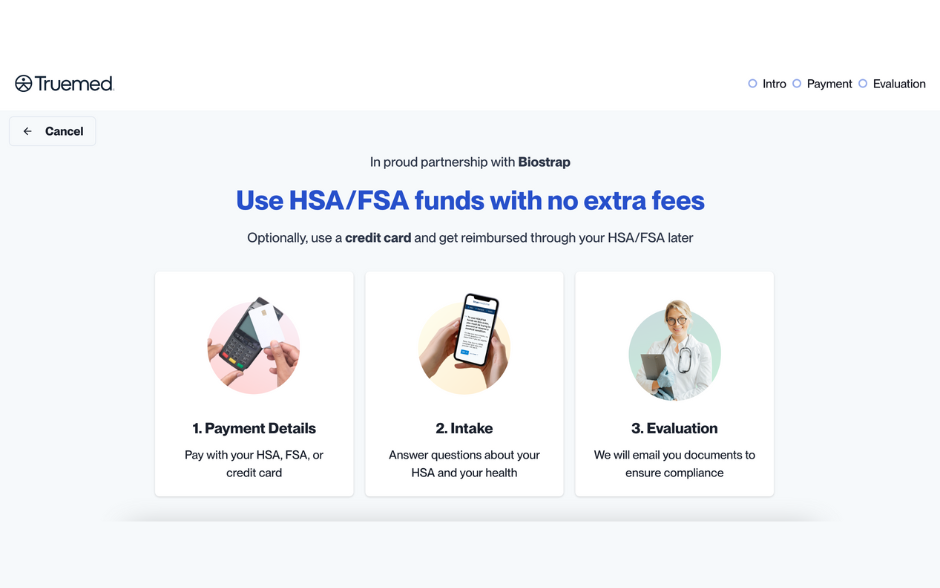There are many ways in which we can measure the effects of stress on the body as it pertains to physical activity and fitness. In the past, we’ve discussed utilizing the Borg rate of perceived exertion scale to determine how hard you think your body is working. Or instead we’ve broken down the complexities of analyzing heart rate zones to determine how intense a bout of exercise is on your cardiovascular system.
Yet a relatively new method for assessing the effects of physical stress on the body has emerged in recent decades. We refer to this concept simply as heart rate variability, or HRV. While techniques such as the Borg scale utilize qualitative values to measure stress on the body, measuring heart rate variability requires wearable technology that can monitor, record and analyze sets of HRV measurement data. As a result, the data provided by a heart rate variability monitor can prove far more valuable than simply describing how fatigued you may feel.
All of this may seem a bit complex, but have no fear! In reality, measuring HRV only requires a heart rate monitor and a smartphone. Often times an iPhone, Android device, or other simple fitness wearable can get the job done.
But in order to measure HRV, it pays to understand what exactly HRV is, and why it’s so important. From there we can break down the various HRV monitors on the market today that seek to provide this important data. And finally, we can dig into what those HRV values really mean for your overall health. Let’s take a deep dive into the world of heart rate variability.
What Is Heart Rate Variability?
Though the term may sound complex, heart rate variability is simply defined as the time between your heart beats that varies as you breathe in and out. This small window of time is measured in milliseconds when using the RMSSD method, which is an intricate mode of calculation that stands for Root Mean Square of Successive Differences. It’s used to find the standard deviation of heartbeat to heartbeat differences.
Given this information, you may now be wondering why HRV is so important. After all, what can the milliseconds of time between heartbeats really disclose about your overall health?
As it turns out, those milliseconds can tell you a whole lot about your personal well-being. Research increasingly suggests that high HRV — that is to say, more variability between heartbeats — is linked to better overall health and a higher level of aerobic fitness. Low HRV, on the other hand, is linked to increased stress levels, fatigue, and even exhaustion.
HRV can be affected by everything from your mindset to air quality to age to exercise patterns. Because HRV is tied to our autonomic nervous system, it acts as an indicator for both the parasympathetic (rest) and sympathetic (activation) branches of our nervous system. With this information in mind, it’s time to examine the many ways in which HRV can be measured.
Measuring Heart Rate Variability
HRV was once utilized solely as a tool to assess cardiovascular risks for patients that suffered from heart attacks. To produce accurate HRV data at the time, an electrocardiogram was produced to analyze the heart’s voltage over a span of seconds. When medical television dramas depict a doctor staring inquisitively at a long sheet of paper with rising and falling lines, this is the electrocardiogram we speak of. Medical professionals analyze what’s referred to as the RR interval. They are studying the variation in beat-to-beat intervals as indicated by the time between two beats of the heart.
Eventually, however, HRV analysis became a standard tool for sports scientists that sought to monitor overtraining in athletes. Studies began to increasingly show that overtrained athletes had low HRV, and thus the usage of heart rate variability monitors began to rise. Both professional and amateur athletes sought the chance to monitor daily HRV values without stepping into the research lab. As a result, personal fitness devices that contained real-time HRV measurement capabilities rapidly increased as wearable technology advanced.
Wearable Technology for Measuring Heart Rate Variability
Today a number of fitness wearable companies offer biofeedback technology that produces real-time measurements of HRV.
Garmin, for instance, sports a full lineup of GPS-enabled watches that include a heart rate sensor in the watch itself. Apple’s Apple Watch does the very same by utilizing infrared technology that detects the heart beat by measuring reflected infrared light from tissue.
Other companies such as Polar offer products like the Polar H7, a heart rate monitor that takes the form of a chest strap worn across the torso, sitting directly above the heart. Wahoo’s TICKR heart rate monitoring chest strap does the very same.
And even Biostrap’s wristband utilizes a heart rate sensor to monitor oxygen saturation, heart rate variability, resting heart rate, and more. Accessories such as a chest strap or shoe pod allow for even more data-driven capabilities that other fitness wearable companies don’t often provide. By tracking metrics associated with sleep, performance, and even recovery, Biostrap’s technology makes a wealth of valuable personal information immediately available.
These devices monitor and record HRV information, but how does that data get to you? By utilizing Bluetooth 4.0, these devices can sync with most heart rate variability monitor apps available through Google’s Google Play store or Apple’s App Store. One of the most popular HRV apps is entitled “elite HRV,” and it syncs with most devices.
Other instruments, like Samsung’s Galaxy smartphone lineup, have implemented heart rate monitors into the phone itself via an infrared finger sensor. The user only has to place their index finger on the sensor to record their heart rate over an allotted period of time. From within these apps and devices, a physiological profile takes shape that seeks to illustrate your heart health over a longer span of time, such as weeks or months. In turn, you have access to powerful physiological information, right at your fingertips.
So What Can You Learn From HRV Data?
You have the device that contains HRV measurement capabilities. You’ve downloaded the necessary apps from the app store of your choice. And that important HRV data we keep referring to has finally synced to your phone. So what can you learn from the data?
It all starts by paying attention to your baseline HRV. This is your everyday HRV based on your resting heart rate when you’re not dripping with sweat after sprinting up a flight of stairs. Understanding your baseline HRV provides you with the perfect snapshot of everyday life. If you’re in good health, your HRV will likely be higher. And if you’re not, it may be lower (your heart rate variability monitor and app of choice can identify if your HRV values are high or low). Refer to the table below for a general idea of where your HRV values should fall.
From there, take time to understand how your lifestyle and health affect your HRV. Perhaps you’re stressed due to tight deadlines at work, or you haven’t slept very well over the past few nights, and your HRV is low as a result. Or instead you may be increasing your training load during exercise, and your HRV is high. Paying attention to your daily life and how it affects your HRV can provide you with a crucial snapshot of your overall health. It can additionally help you determine where improvements in your health should be made. And this all starts by utilizing a heart rate variability monitor.
Is Focusing on Heart Rate Variability Enough?
As with most forms of physiological analysis, focusing solely on HRV or any singular health statistic is not enough. By utilizing multiple forms of health-oriented analysis, a more thorough snapshot of your overall health can begin to take shape. Monitoring other vitals that may include blood pressure, heart rate, oxygen saturation, and more are all worth taking into consideration. With the help of wearable fitness trackers, like those designed by Biostrap, such possibilities quickly become reality.



